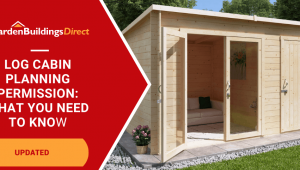Jump to:
A garden shed is no longer just a dumping ground for your old tools and house clutter. There’s so much more you can do with space, so why not transform your garden shed?
Whether it be a man cave or she-cabin, there are is tonnes of ideas you can take inspiration from. Here are 14 ideas for transforming your garden shed right now!
1. Summer House
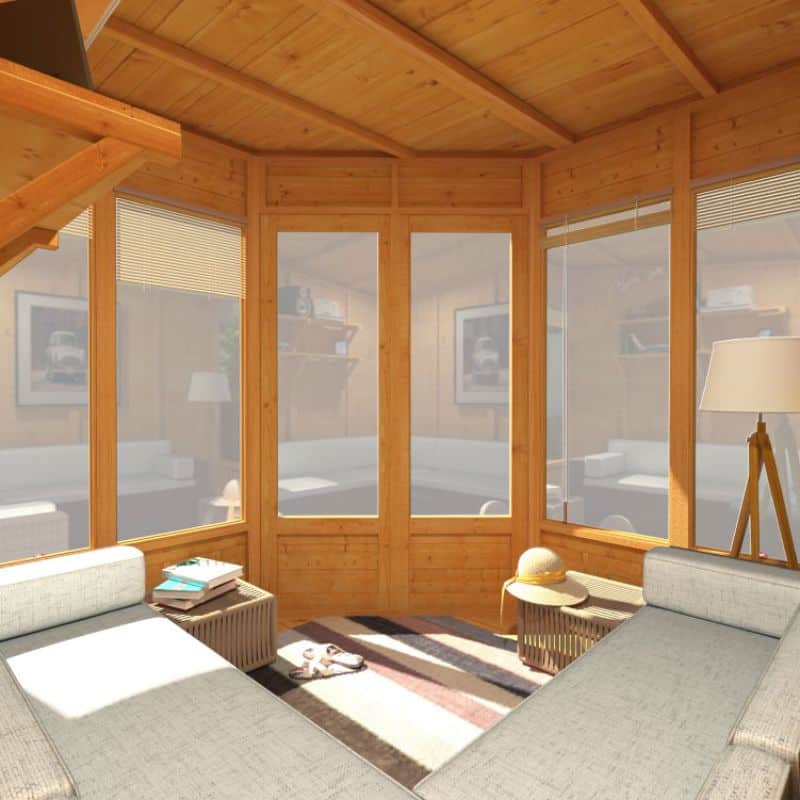
Everybody needs a spot for their creature comforts. When you are fed up with not getting enough personal space at home, go to your garden shed. Clear away any debris and completely tidy the place up. Put in a big armchair, sit back and relax in your very own summer house.
2. Home Gym
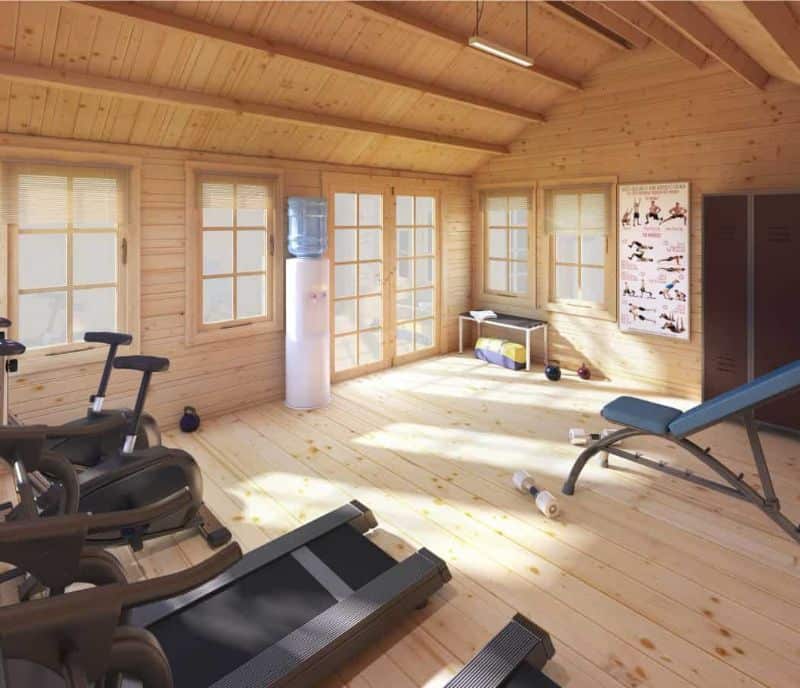
Your shed doesn’t need to be big to double as a garden gym. It does, however, need a solid floor enough to handle extra weight under constant pressure. That includes you, the equipment, and the movements from workouts—jumping, for instance. A bit of reinforcing might be needed, like laying down plywood and adding rubber mats. Or, if you’re buying a new wooden shed, check if there’s a floor upgrade option.
Airflow is crucial, too. You’ll notice it once you start using the space; it gets stuffy fast, even with light training. A safe choice is to have a small window you can crack open or a wall vent for proper gym ventilation.
Layout also matters more than size, especially in smaller setups. Our tip is to keep the centre clear and make use of the walls to save floor space. How you furnish it is up to you, but stick to the equipment you’ll only use. That way, it stays practical and doesn’t end up cluttered.
3. Garden Office
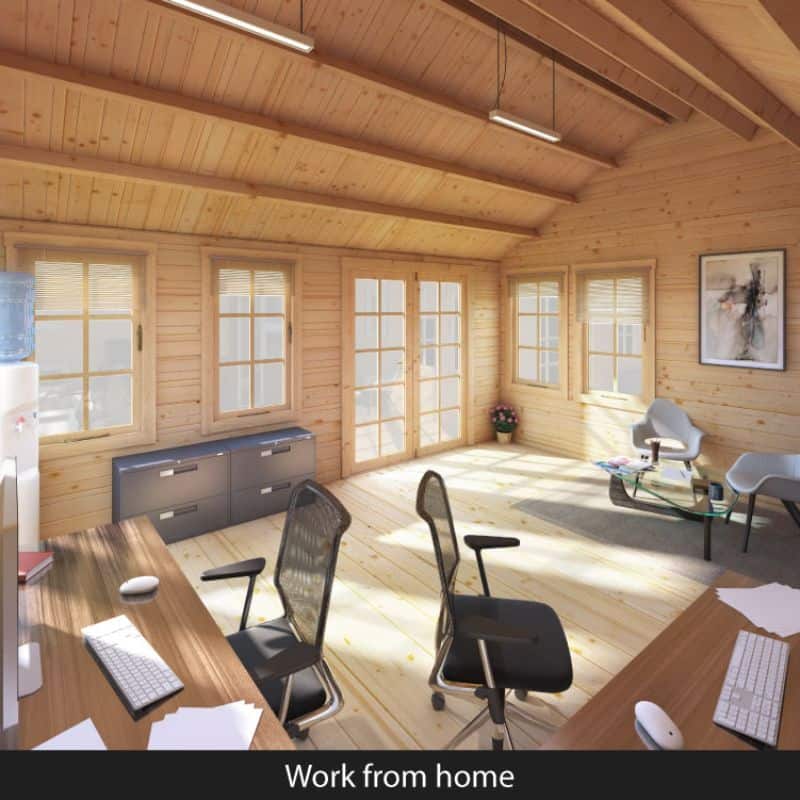
Your shed could make a great garden office. First, you need to ensure you have enough space for at least a small desk and chair, as well as room to move around. From there,inspect the floor and roof to ensure they’re still intact. Before you can make it a room for lengthy use, they might need repairs or replacements if there are signs of rot or leaks.
Insulation isn’t standard in most sheds—unless you have a log cabin shed, which often comes with thicker walls that offer that benefit. But if yours doesn’t have any, now is a good time to add it. It will take a bit more work, but it’ll make the space usable all year round, so it’s worth a try.
Shed ventilation is just as important, especially if windowless. Fitting an opening window is your best bet, though you’ll likely need to cut the panels to size. Or, you can leave it as it is and add a vent instead to keep dampness at bay and maintain air circulation.
Work on those areas, including running electricity to your shed, and you’re good to go! No more working from the kitchen table or squeezing yourself into the corner of the living room.
4. Music Room
Band practice can be hard if you’re all crammed into one room, and could disturb your family with music that isn’t perfected yet. With a music shed, design a space which is perfect to rehearse, then fill it out with space to hang guitars, store drum kits and even soundproof it. This will allow you to go wild with noise and not disturb the neighbours.
Cut down noise by using heavy fabric or adding leftover insulation to the walls. You won’t get studio-grade shed soundproofing, but it’s enough to muffle the sound.
5. Model Railway Room
Model train building is a very popular hobby amongst adults and children alike. Large train sets always end up taking lots of room in the house. A move to the shed might be the best way forward. You will have a big enough area for the whole track, but perhaps the best thing will be no disturbances.
6. Games Shed
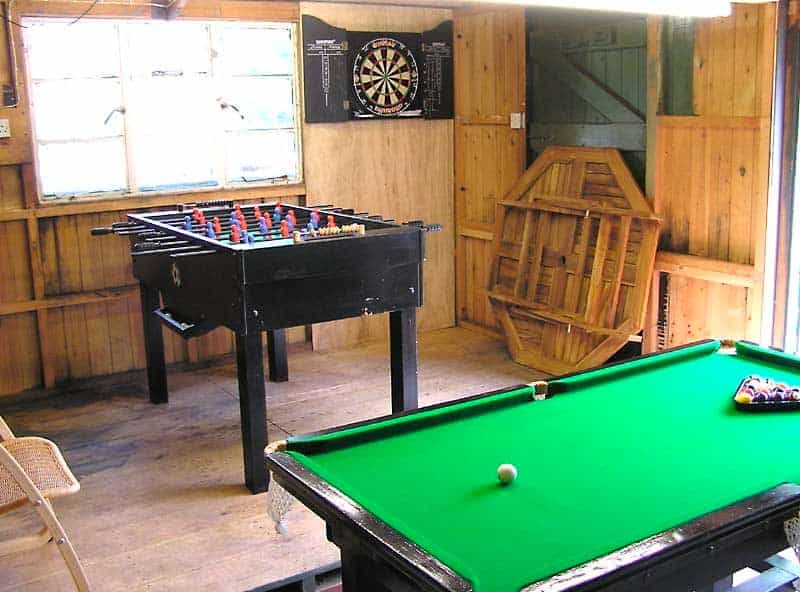
When you’re tired of stumbling over toys, or hearing the racket of a games console, then it’s time for a change. Create a games room in your garden shed just for the children and give them enough space to wreak havoc. If you want a games room for yourself, move in your games console, or snooker table and avoid ever having to be disturbed.
7. Art Studio
It is incredibly difficult to be creative in cramped spaces, so expand out and turn your shed into a studio. Instead of having paintbrushes and notepads entangled in a mess, give yourself enough storage space to have everything separated. Install a large canvas table and get creative.
Make your wooden shed work as your creative space, even if it’s small. Lighting will be your main focus, provided the space has no major issues. Windows are an advantage, but if yours doesn’t have them, a skylight can compensate for that. A battery-operated solar light is also an option if you prefer to avoid the hassle of rewiring.
When it comes to the floor, keep it simple—better yet, leave it untouched. It’s going to get messy anyway; wooden floorboards are easy to sweep or wipe down.
8. Yoga Studio
Yoga can be a great solution to stress after a busy week at work. However, it can be difficult to find a place which is stress-free, in your home. Create a space which completely avoids any distractions and moves the mats into your back garden.
9. Home Cinema

A home cinema is something the whole family can enjoy. Installing one in your home can be very costly and impractical. However, why not transform your garden shed into a luxury space to watch all your favourite films. Set yourself up with a TV or projector and surround sound and add some comfy chairs.
10. Workshop
DIY is part and parcel of maintaining any garden or house. But finding a space to do it, or having an area to organize your tools can be a problem. A shed is a perfect solution, giving you enough space to store your equipment and get on with your work.
11. Home Library
It can be incredibly difficult to find a spot at home just for your books. It is even harder to find somewhere, where you can actually read. Creating a home library in your garden shed is a fantastic solution. Put some bookshelves up, install a heater and move in a comfy armchair. Get your head in a book and hopefully, you won’t be distracted.
12. Bar Shed
A pub shed is a great way to save money, whilst being the social hub of your friends. The good news is, you don’t need much room for a simple garden pub with an intimate setup.
A couple of foldable stools or a bench down one side cover the seating. If there’s space for a small table or a ledge under the window, even better. Don’t bother with a full bar counter unless you’ve got room to spare—the BillyOh Nightjar fits the purpose.
Running out of space in there? Swap the mini fridge with a cool box or a plug-in cooler that runs off a portable battery. Tuck it under the counter or in a corner.
A few seats, a place to rest your glass, and the right vibe to set to mood is all you need to make the shed somewhere everyone wants to hang out!
13. Pool Store
If you are lucky enough to have a pool, then having a store is essential. A shed is a perfect space to hold all your swimwear essentials, not to mention getting dry. If you want to push the boat out even further, install a shower on the outside for rinsing off.
14. Pet House
It is fantastic having pets as they become part of the family. However, for some of us, it can be hard to constantly have a pet in the house. A pet house is a great spot for making sure your animals stay safe and comfortable, whilst remaining part of the family.



